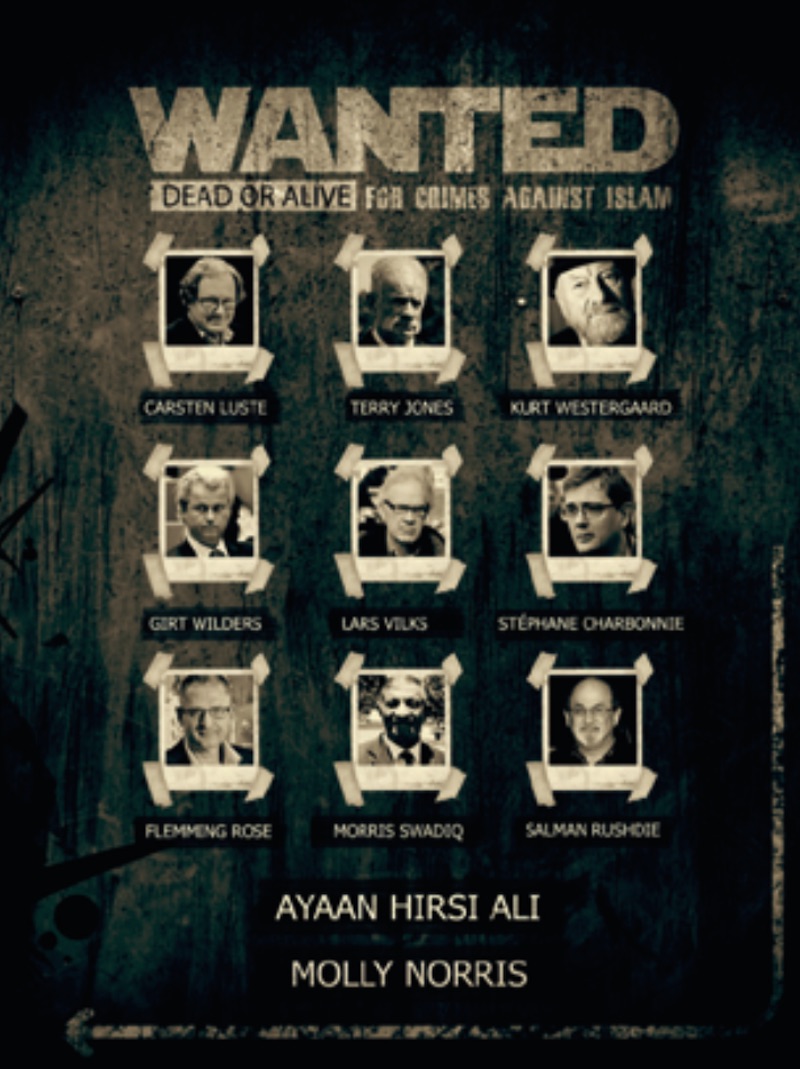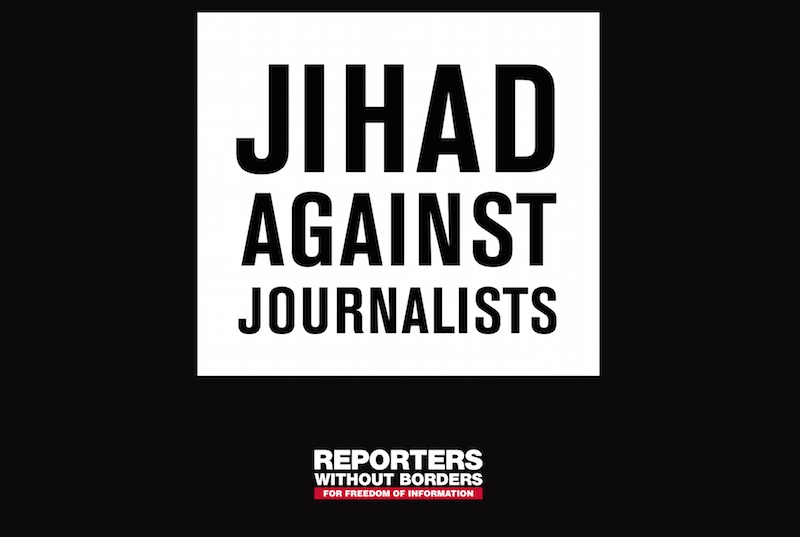One year after the attack on the editorial office of the satirical magazine Charlie Hebdo, Reporters Without Borders shows in the report "Jihad against Journalists" how Islamist groups systematically persecute critical journalists and use media as strategic weapons internally and externally.
"Brutal violence videos are only a small part of the very professionally operated propaganda machinery of ISIS, which deceives followers with an Islamist utopia and recruits new fighters," said ROG-Austria President Rubina Möhring. "The challenge facing the international community is to counter this propaganda with diverse, balanced information, instead of restricting press freedom in the fight against terrorism."
Public executions and the kidnapping industry
The so-called Islamic State (IS) openly designates critical journalists as military targets and equates them with enemy combatants. After the capture of the Iraqi city of Mosul, for example, ISIS abducted 48 media workers there within 16 months and killed at least 13 of them. The recent victims of the extremists include Syrian journalist Naji Jerf, murdered on December 27, 2015 in Turkey, and citizen journalist Achmed Mohamed al-Mousa from the network Raqqa is Being Slaughtered Silently, who was killed by masked individuals in December 2015 in the Syrian city of Idlib.
The public executions of foreign journalists, staged spectacularly for propaganda purposes, received significant attention in Western media. While ISIS likely killed the US journalists James Foley and Steven Sotloff in retaliation for US policies in the region, negotiations for the release of Japanese journalist Kenji Goto failed - the Islamists had demanded 40 million dollars in ransom. The kidnapping of journalists has become a business field, with the proceeds serving as an important source of financing for the extremists.
 ISIS propaganda stages Islamist utopia
ISIS propaganda stages Islamist utopia
ROG extensively describes in the report the sophisticated system of media control and propaganda through which ISIS seeks to control the flow of information in the territories they occupy and worldwide. Their methods resemble those of dictators, which ROG condemns as enemies of press freedom: banning coverage in certain zones, absolute control over journalistic work, excessive violence against critical reporters. An example of this can be seen in the "11 Commandments for Journalists of Deir Ezzor" published by ISIS in October 2014 and documented by ROG in the report.
However, the professionally staged propaganda of ISIS primarily targets its followers both domestically and internationally. The extremists spread their message via seven television channels, the radio station Al Bayan in Mosul, and the glossy magazine Dabiq published in several languages. Through countless channels on social networks worldwide, they publish over 1,000 propaganda messages monthly. The videos and reports stage an Islamic utopia in the areas controlled by ISIS: its fighters build schools and hospitals, take care of environmental protection, and provide for the people. Only about two percent of the content shows violence - in an extremely brutal form, highly effective in spreading fear and recruiting new fighters.
Fighting terrorism as a pretext for censorship
To secure the allegiance of its followers in so-called media brigades, ISIS uses rewards and privileges alongside brutal control. For example, a cameraman who goes to battle for ISIS receives up to seven times more pay than an ordinary soldier. A central figure in the propaganda machine of ISIS is British journalist John Cantlie. He was captured in November 2012 along with James Foley and began producing video messages directed against the West for his captors after Foley's beheading.
In the report, Reporters Without Borders does not limit itself to ISIS propaganda and violence against journalists but also documents the similarly brutal actions of the al-Shabaab militia in Somalia, the terrorist group Boko Haram in Nigeria, and Islamist militias in Libya. Furthermore, ROG describes how many regimes worldwide use the fight against terrorism as a pretext to restrict press freedom - not only in the Middle East and Africa.
HERE you can download the report "Jihad against Journalists" by Reporters Without Borders for free
 From the al-Qaida magazine Inspire, Spring 2013. There was also a wanted poster including journalists.
From the al-Qaida magazine Inspire, Spring 2013. There was also a wanted poster including journalists.



